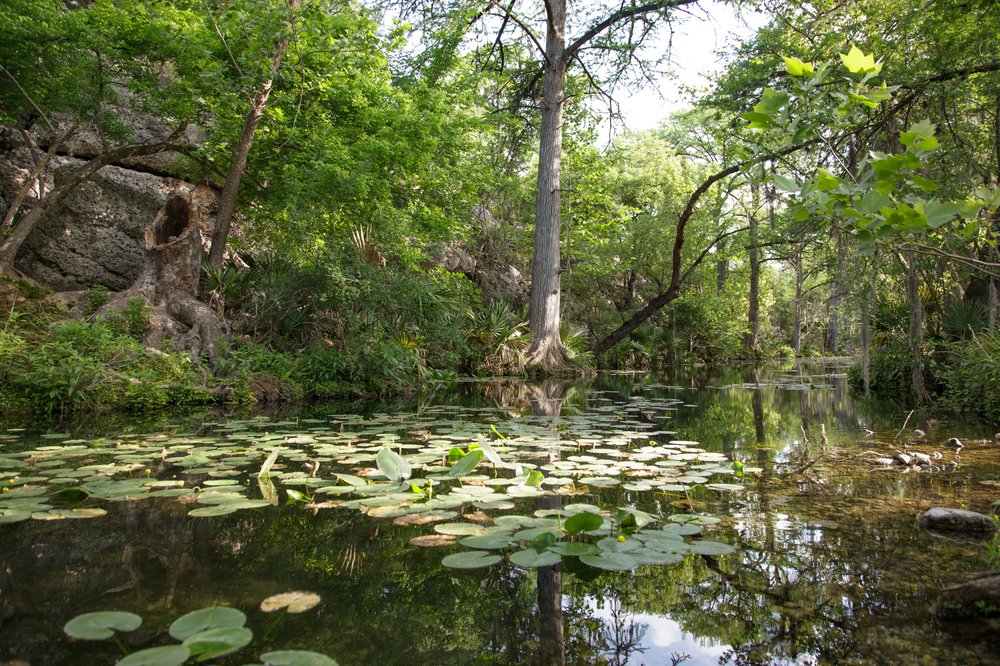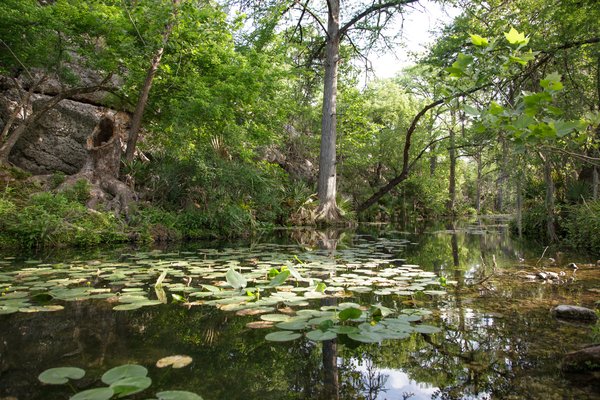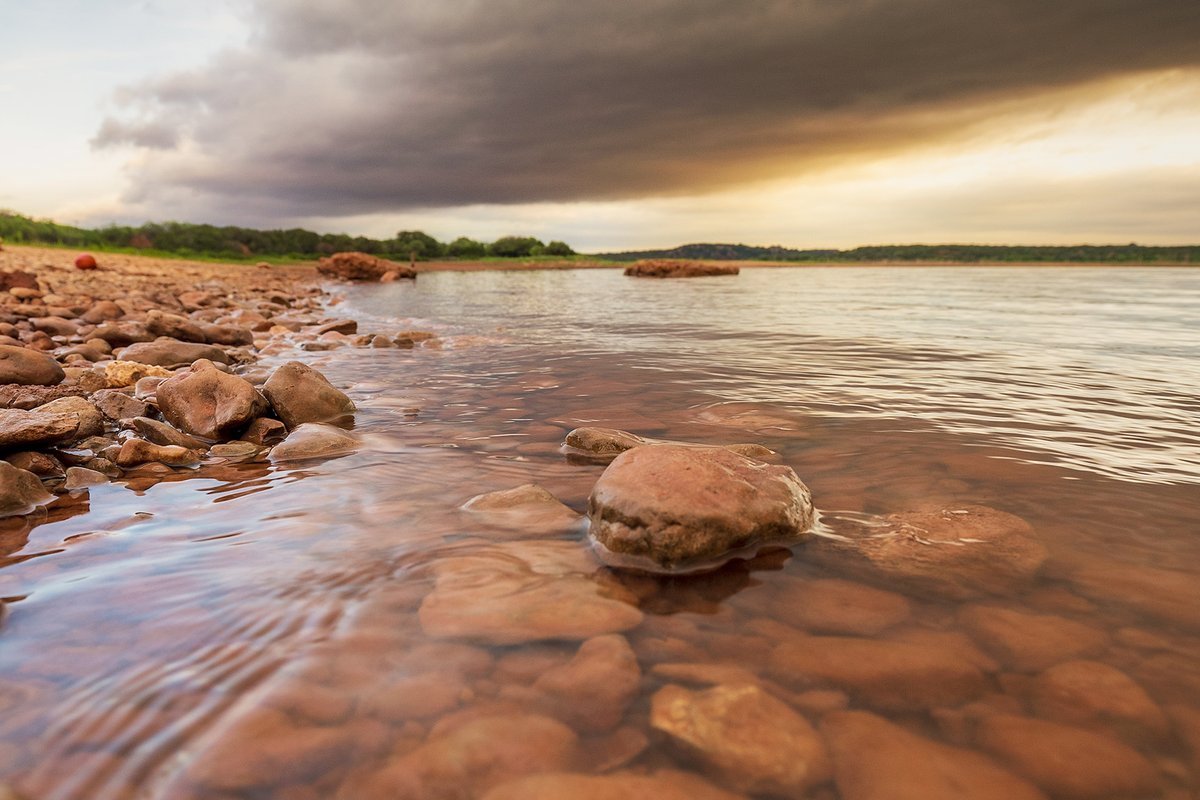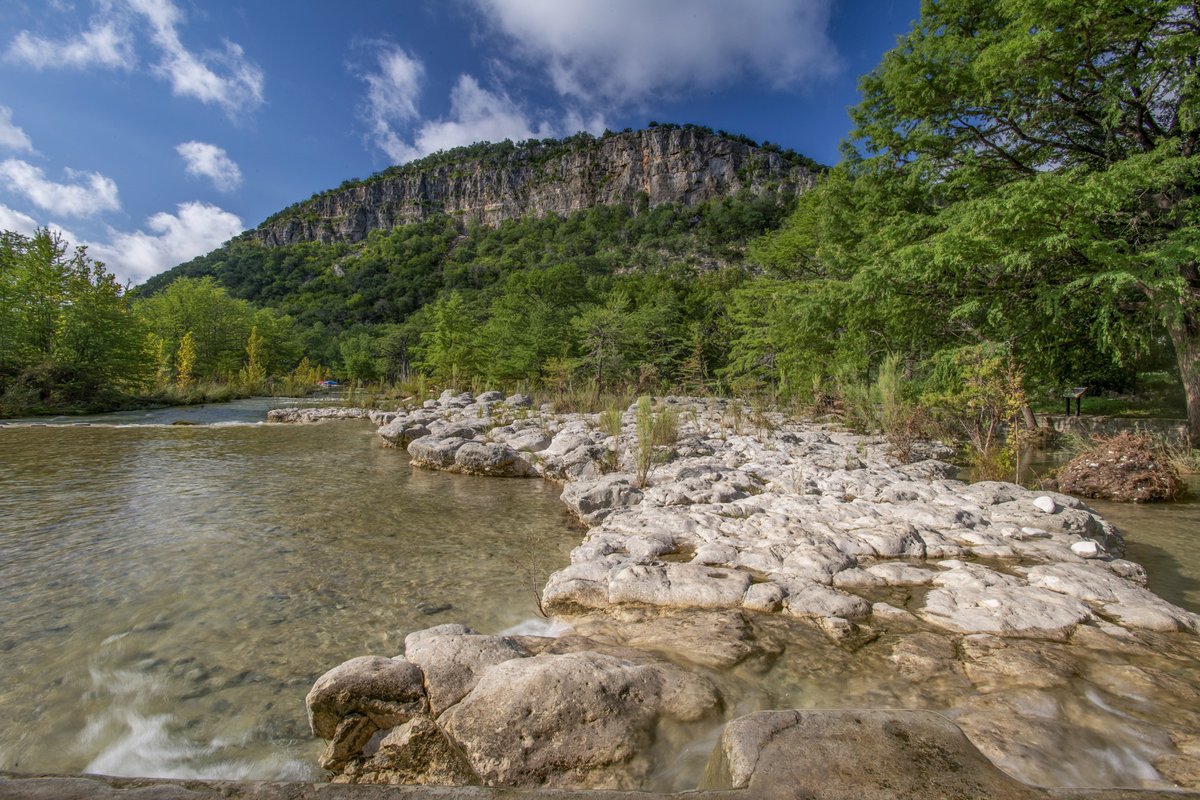The Texas Parks and Wildlife Department has acquired 515 acres of pristine land and water along Honey Creek in Central Texas to be protected and stewarded for future generations of Texans.
TPWD partnered with The Nature Conservancy (TNC) in Texas, Texas Parks and Wildlife Foundation and landowners Ronnie and Terry Urbanczyk to protect the Honey Creek watershed and wildlife habitat in a rapidly growing area near San Antonio in the Texas Hill Country. The $25 million purchase was made possible by the Land and Water Conservation Fund, state appropriations for land acquisitions and private donations.
“This acquisition is a wonderful example of what we can achieve through public-private partnerships and conservation-minded landowners who want to help preserve the last, best places in Texas for future generations,” says David Yoskowitz, executive director of TPWD.
The creek is a clean, healthy stream that supports a diverse ecosystem and exceptional aquatic life.
“Honey Creek is one of the most pristine streams not only in the Hill Country, but in all of Texas,” says Zach Spector, director of conservation programs for TPWF. “During the Texas State Parks centennial year, we’re so pleased to not only be conserving one of our state’s finest streams, but also growing our state parks system by expanding the Honey Creek State Natural Area. This is truly a win for fish, wildlife and people.”
The land acquisition builds on a history of collaborative conservation efforts in the region.
“The Nature Conservancy has been working in this area since the 1980s, when we first collaborated with TPWD to create Honey Creek State Natural Area,” says Suzanne Scott, state director for TNC in Texas. “We’re thrilled that years later, thanks to the dedication and hard work of landowners, partners, funders and passionate residents, our work to safeguard this vital Hill Country ecosystem continues.”
In 1981, TNC acquired 1,825 acres in Comal County, which were transferred in 1985 to TPWD to create the 2,294-acre Honey Creek State Natural Area. Later, an easement in 2022 protected an additional 621 acres. The 515 acres now acquired through the Urbanczyks help complete the mosaic of ecologically protected lands around the Honey Creek watershed.
The Urbanczyks said they are eager to see the property’s new owners protect and cherish it as they have for the past three decades.
“This sale marks a new era for Honey Creek Ranch, and we are confident that it will be in good hands under the careful stewardship of Texas Parks and Wildlife and the Nature Conservancy,” Ronnie Urbanczyk says. “We are gratified that the State of Texas and its residents will have the opportunity to enjoy this pristine piece of land.”
The property, located adjacent to Honey Creek State Natural Area, will expand access to outdoor recreation and nature education; existing facilities on the property will provide a beautiful venue for special events like weddings and family reunions. TPWD looks forward to opening this new property and event venue to the public but has not yet determined a date.
Ongoing commercial and residential development poses a threat to the integrity of this landscape’s unique hydrology and biological diversity. Numerous native and threatened species — including the Comal blind salamander, golden-cheeked warbler, black-capped vireo and at least six invertebrates found in only a few caves in Central Texas — make their home on the property and in nearby Honey Creek Cave.
Considered the largest cave system in Texas, Honey Creek Cave consists of several miles of underground river that serve as the primary source of Honey Creek, an important tributary of the Guadalupe River that feeds Canyon Lake. It is also in a drainage area for the Edwards Aquifer, which supplies drinking water to nearly 2 million Texans and the City of San Antonio.
Honey Creek and the new property are home to a variety of habitats and plants, including live oaks, agarita, Texas persimmon, junipers, Mexican buckeye and cypress trees adorned with Spanish moss.
“Together with the adjacent Guadalupe River State Park, these protected lands encompass nearly 5,000 acres of habitat that sustain plants and wildlife, benefit water quality and provide opportunities for people to spend time in nature,” says Texas State Parks Director Rodney Franklin. “It will be our privilege to plan for a future of family picnics, nature walks and educational programming that will support stewardship of this special place.”





